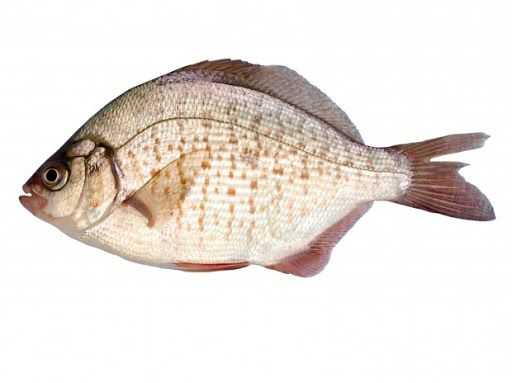Calico Surfperch

Species Details
Amphistichus Koelzi
Embiotocidae
Perciformes
nearshore
1 - 2 lbs.
9" - 11"
Calico Surfperch (Amphistichus koelzi) Description
The Calico Surfperch are generally silver in their coloring. Their sides are characterized by broken bars and mottles, with colors ranging from olive green to brown. Their dorsal coloring is either olivaceous or bluish in their hue. Their fins are red or reddish in color, except for their forked caudal fin which tends to range from pink to bright red in color, and their pectoral fins which are plain.
The heads of the Calico Surfperch are quite small. They have rather small eyes and small mouth as well. Anglers can distinguish them from other surfperch by looking at how the lower edge of their eyes reaches the upper lip. They can also be distinguished from species such as the redtail surfperch by the shape of their bodies. Compared to the redtail, the calico is more disc-like in shape.
Size and Diet
The Calico Surfperch grows up to 12 inches in length, though most that are commonly caught range from 9 to 11 inches. The world record for this fish is 12 inches and 2 pounds. They generally live up to 6 years of age.
The Calico Surfperch, like other surfperch species, are bottom-feeders. They normally feed on crustaceans such as shrimps, mussels, crabs, and clams, and other benthic invertebrates.
Interesting Facts about Calico Surfperch
- The Calico Surfperch, like other surfperch species, are viviparous — meaning the mothers nurture their young inside the womb, with a gestation period lasting up to six months. For this reason, their juveniles are relatively big.
- The Calico Surfperch is also sometimes called the Humpback Perch and the Porgee. In Mexico, it is called mojarra angaripola.
- As a human food source, the Calico Surfperch is not as desirable, though it can be relatively tasty if coated and pan-fried in butter.
- As sea creatures, they prey of bigger fish such as California Halibut, Pacific Bonito, Barred Sand Bass, Leopard Shark, Kelp Bass, Lingcod, Salmon, Rockfish, and Striped Bass. Sea birds such as gulls, osprey, herons, and loons, as well as sea lions, and harbor seals also consume them.
- The Calico Surfperch are the top surf area fish species caught in the central California piers, particularly in the Pismo Beach-Cayucos region, along with the Barred Surfperch.
- This fish species can be caught by recreational anglers all year round, though they cannot be taken in San Francisco Bay and San Pablo Bay from April to the end of July.
- Historically, the Calico Surfperch have been seen as prone to overfishing, but due to anglers commonly practicing catch and release for this species these days, they continue to thrive.
Fishing Technique: How to Catch Calico Surfperch
The Calico Surfperch are not popular as game fish. They are available for fishing all year round, but the best season for anglers would be around spring, when they gather up in schools for spawning along the shoreline, within about 30 feet. The best way to prepare for fishing surfperch is by looking for spots where the waves break hard as this is where they may dart in and out for food. You can also angle for them in water areas with some structures such as rocks and jetties.
Fishing for the Calico Surfperch will require waiting for the tide, so it is recommended for anglers to fish in lowlight conditions — very early mornings, or late afternoons just as the sun has set. Overcast skies will bode well, too.
As with any surfperch, fishing for the Calico Surfperch will require anglers to carry heavy tackle, which is necessary because you will be fishing for these species in heavy surf. The tackle should also be heavy enough to reach the bottom of the surf area. Anglers will do well with long rods that can carry 2- to 6-ounce of weight and a large spinning reel. You should also use size 6 to size 2 hooks, baited on a high/low leader.
As for bait, the Calico Surfperch are partial to live sand crabs, live blood worms or pile worms. Other live bait such as fresh mussels, clams, and shrimp also work well.
When pier fishing, the closer you can get to the inshore pilings, the better. This will yield a bigger catch.
Habitat and Distribution
The Calico Surfperch are a non-migratory and demersal fish species. They can normally be found in shallow waters, sandy shores, rocky reefs (particularly caves and crevices), and artificial structures. They occur in depths from the surf zone up to 30 feet. They are often reported to swim with small schools.
This fish species occur in the temperate waters between Arroyo San Isidro, on the northwest and central coasts of Baja California, Shishi Beach, and Cape Flattery in Washington. They have also been reported less than 20 miles from the Canadian border.
While they are native to the Mexican waters of the Pacific Ocean, only a limited number of them are distributed along the Guerrero Negro in Baja California towards central and northwest Baja California.







